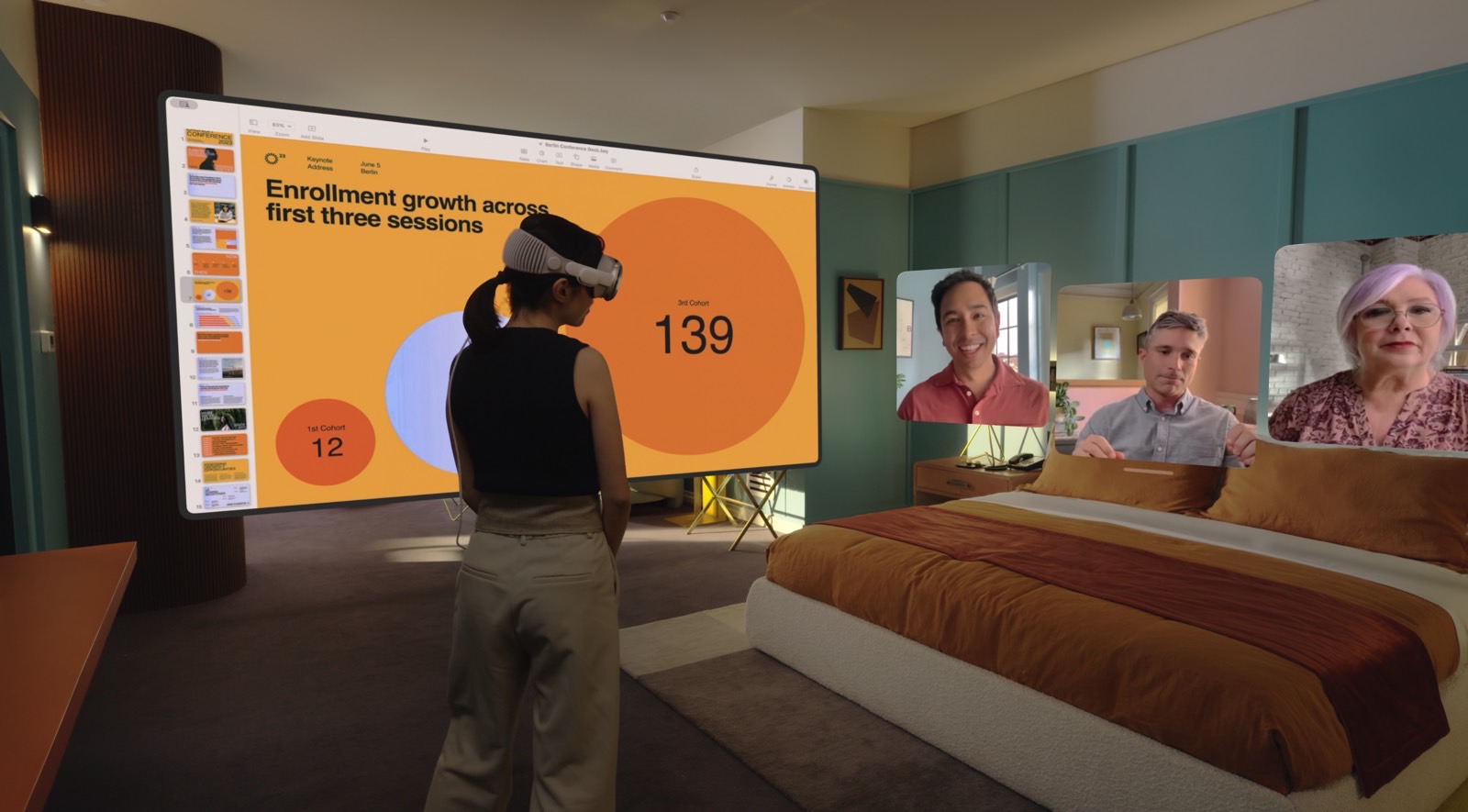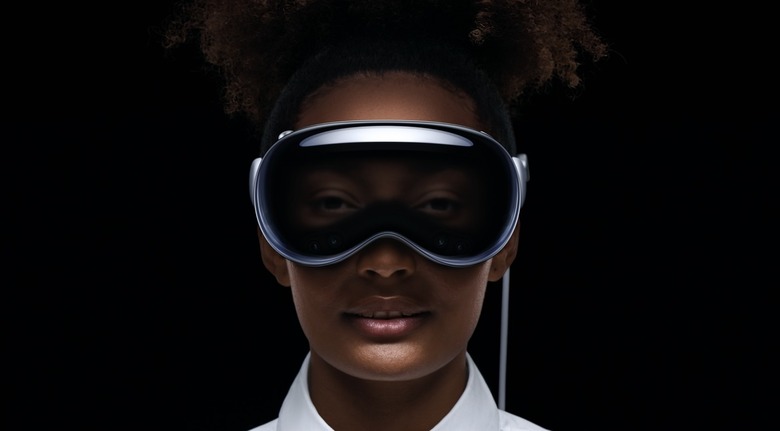Apple's Vision Pro Doesn't Have To Sell As Well As The iPhone Or Apple Watch
Starting at $3,499, Apple's Vision Pro spatial computer will be a tough sell for Apple. The mixed reality headset is more expensive than a new 15-inch MacBook Air, even though it essentially offers the same performance. The AR/VR gadget features incredibly futuristic tech that Apple spent years and billions to develop, however. That explains the high cost of the first-gen device.
Add to the price tag the difficulty of manufacturing the Vision Pro and Apple's slow rollout, including in-store appointments for purchases, and you'll draw the same conclusions others have. The Vision Pro will be a "flop" in terms of sales. It'll hardly match Apple Watch, let alone the iPad or iPhone.
But the thing about the Vision Pro is that it absolutely doesn't have to be a sales success in its first year. Or second or third. Instead, this device will open the doors to the future of computing. A future that Apple is quick to embark on, maybe even faster than competitors.
Bloomberg's Mark Gurman reviews the early sales of Apple's various brand-new devices that preceded the Vision Pro. Here are some figures from Gurman's coverage:
- The iPod was responsible for 40% of Apple's annual revenue when the iPhone launched in 2007, or about $8 billion annually.
- Apple sold 1 million iPhones in the first three months. It reached 10 million in a year. The iPhone generated a third of Apple's revenue by 2009.
- iPad brought in nearly $20 billion in its first year of sales, after some 15 million tablets sold.
- The Apple Watch never got its own category of sales, but it's part of the Wearables, Home, and Accessories, which brings in about $40 billion. Almost as much as the Mac.
The Vision Pro can't possibly dream of matching any of those figures. Not anytime soon. And it might never reach such sales. Gurman estimates that Vision Pro could bring about $1.5 billion in the first year. That's if Apple sells about 400,000 units for an average price of around $3,700.

As I said, these figures will constitute a "flop" for Apple, and I expect to see many use that term. Or question the necessity of Vision Pro, a product that people aren't going to hurry to buy. I believe this is the wrong take here.
Yes, the Vision Pro is expensive and has plenty of compromises. For example, I want to purchase the device, and I already worry about the Vision Pro's potential to induce nausea. But the Vision Pro needs to go on sale now. It's only a matter of time until others develop similar spatial computers. Apple needs to have its device in the hands of users and developers as fast as possible.
That's because users and developers will really test the Vision Pro. They will discover apps and use cases that Apple might not have envisioned. After all, it was customers who defined the Apple Watch's purpose. The wearable didn't become an iPhone replacement, as Apple made it seem with the first-gen model. Instead, it's a great health tracker, and it delivers all your notifications.
Apple also needs to refine the hardware. With the Vision Pro, Apple wants to put a computer on our faces, not our wrists. But this time, it's different. Unlike the Watch, the Vision Pro has a virtually unlimited display. And it runs on incredible hardware. Again, it's a MacBook on your face. The main problem is the bulky design.
That's another reason Apple needs the Vision Pro out in the wild, even if it'll face "flop" remarks left and right. It'll help Apple come up with innovations that let it create smaller, lighter Vision Pro models. The ultimate goal is to make a headset resembling a pair of regular glasses. That's the spatial computer that will replace the iPhone.
As for those who get in early on the Vision Pro and visionOS, they'll have an early sit at the table. They'll get to experience the future of computing from the ground up. Kind of like the first-gen iPhone owners witnessed the growth of that platform from the first model all the way to the upcoming iPhone 15.
